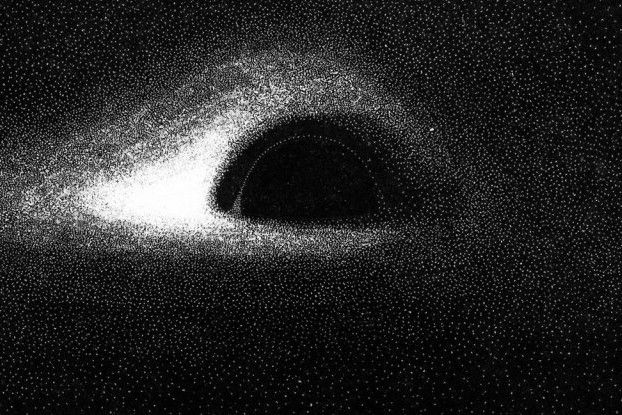Within the serenity of our cosmos, there exist astronomical entities that not only bend space-time but also consume their surroundings, including rocks, stars, planets, dust, and even light itself, while remaining utterly invisible. These are widely known as black holes.
But who exactly are these cosmic predators, and how did physics reveal their invisible dominion over the universe? Black holes are regions in space where gravity is so intense that it overrides all other fundamental forces. Nothing, not even light, can escape beyond their boundary, known as the Event Horizon. This immense gravitational pull shrouds them in darkness. Yet the phenomena they exhibit, such as stars orbiting at staggering speeds, the warping of light around their periphery, and the emission of powerful X-rays as matter is drawn inward, serve as crucial evidence in unravelling their hidden nature.
The journey to understand these entities did not begin with telescopes but with thought experiments. In 1783, an English natural philosopher, Sir John Michell, theorised the presence of “dark stars,” which would be so dense that their gravitational pull could trap light. Pierre-Simon Laplace supported similar ideas in 1796, but since Newtonian gravity could not fully explain the concept, it was eventually set aside.
A scientific leap came in 1915 when Einstein gave his theory of general relativity, redefining gravity as curvature of spacetime caused by mass and energy. Every compact and dense mass can cause curvature in space-time. Just a year later, while serving in World War I, Karl Schwarzschild found an exact solution to Einstein’s equation, describing the structure of space around a spherical, non-rotating mass. His solutions gave the idea of Schwarzschild’s radius, commonly known as the Event Horizon. However, at that time, black holes were perceived as nothing more than a strange and absurd mathematical curiosity.
During the mid-20th century, however, black holes gained physical credibility through the work of Roger Penrose, Robert Oppenheimer, and John Wheeler. Oppenheimer and his colleague Hartland Snyder described the formation of black holes as massive stars collapsing under their gravitational pull after exhausting their nuclear fuel. Penrose later revealed that after a massive star collapses, it leads to the formation of a singularity—a point with infinite density where the laws of physics no longer apply. These ideas, once considered thought experiments and theories, are now confirmed by astronomical observations.
Today, black holes are neither an absurd curiosity nor just a theory or thought experiment but a reality that is observed, studied, and even imaged. They are called cosmic predators not because they hunt their prey through space and gravity, but because they remain silent and concealed despite their immense, powerful forces. Unlike living hunters who chase their prey, black holes merely wait. Their weapon is gravity, which is unyielding. Anything that enters their domain eventually becomes trapped in their grasp. At the centre of this predatory nature lies the invisible barrier that marks the point of no return. Before the final moment, matter spirals inward in a turbulent, glowing whirlpool known as an accretion disc. As dust, stars, and rocks are drawn into this disc, they accelerate to incredible speeds, heating up to a million degrees Celsius and emitting energy and X-rays into space. This radiation is often the only warning astronomers have of a black hole’s feeding frenzy.
Black holes don’t rest; they devour and expand themselves, making them more dangerous. The more massive the black hole is, the more immense its gravitational pull will be. Influencing planetary systems, galaxies, and galactic cores around it.
In the grand stage of the universe, black holes will always be the silent, ruthless sculptors and architects. From altering galaxies to distorting time itself, their invisible influence is spread throughout the entire universe like a plague. Black holes will always challenge human knowledge and physics, daring us to peer deeper into the unknown.
















